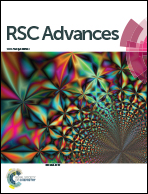Predicting the optimum compositions of a parenteral nanoemulsion system loaded with azithromycin antibiotic utilizing the artificial neural network model
Abstract
For the purpose of brain delivery via intravenous administration, the formulation of an azithromycin-loaded nanoemulsion system was optimized utilizing the artificial neural network (ANN) as a multivariate statistical technique. The input effective variables for nanoemulsion formulation were drug loading, surfactant and co-surfactant content, concentration of glycerol, and concentration of vitamin E; the particle size was the output response, because size reduction will improve the stability of the nanoemulsion and the biological efficacy of the drug in vivo after parenteral administration. To achieve the optimum topologies, the ANN was trained by Incremental Back-Propagation (IBP), Batch Back-Propagation (BBP), Quick Propagation (QP), and Levenberg–Marquardt (LM) algorithms for testing data set. The topologies were confirmed by the indicator of minimized root mean squared error (RMSE) for each. Based on this indicator, BBP-5-14-1 was selected as the optimum topology to be used as a final model to predict the desirable particle size and relative importance of the effective variables of the formulation. The ANN analysis showed that the actual particle size (54.7 nm ± 0.8) of the formulated nanoemulsion was quite close to the predicted value (53.9 nm) obtained from the batch back propagation-ANN model, which supports the conclusion that the ANN model has the potential to predict a stable nanoemulsion system that could be used efficiently for the parenteral administration of azithromycin antibiotic.


 Please wait while we load your content...
Please wait while we load your content...